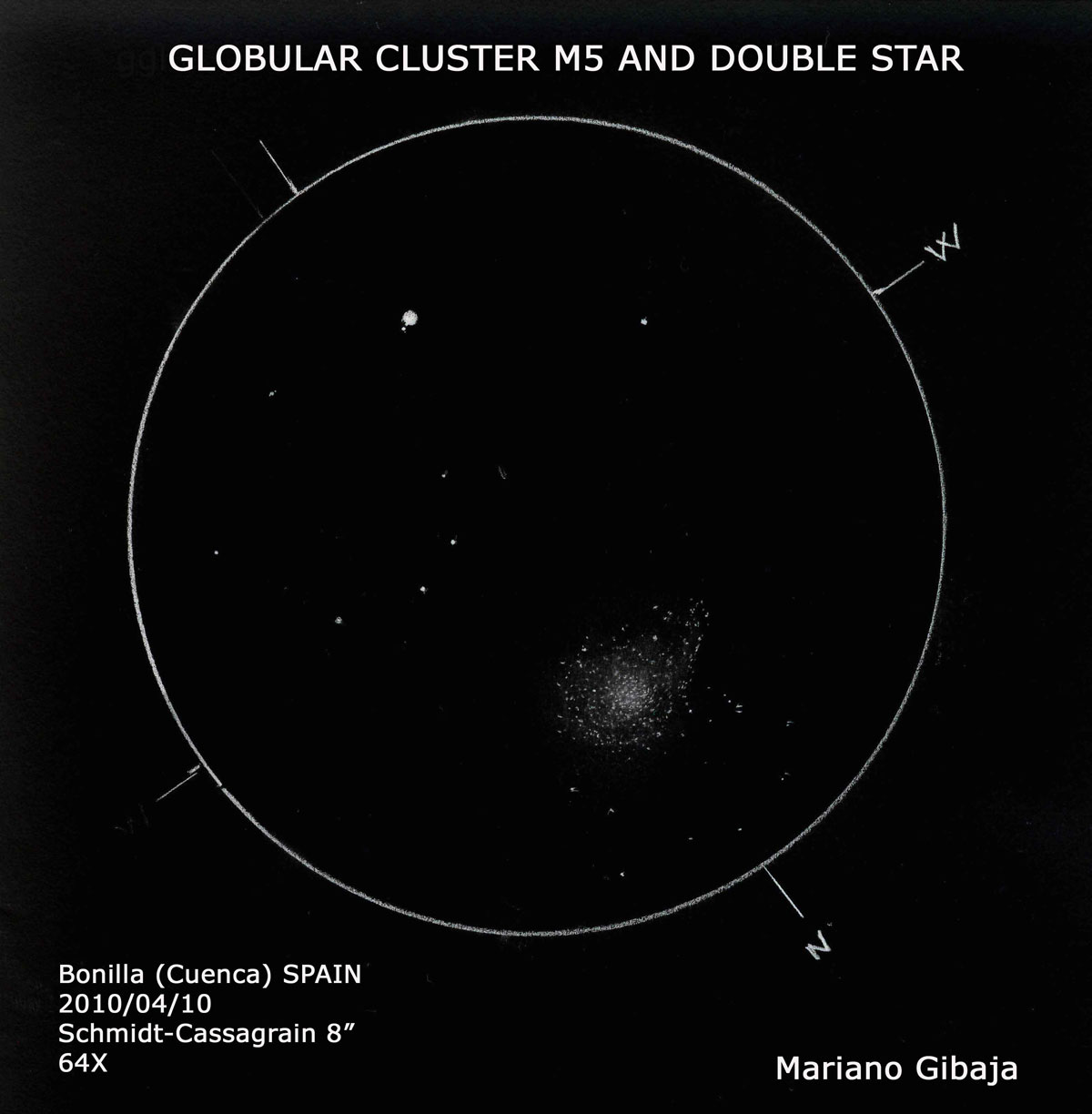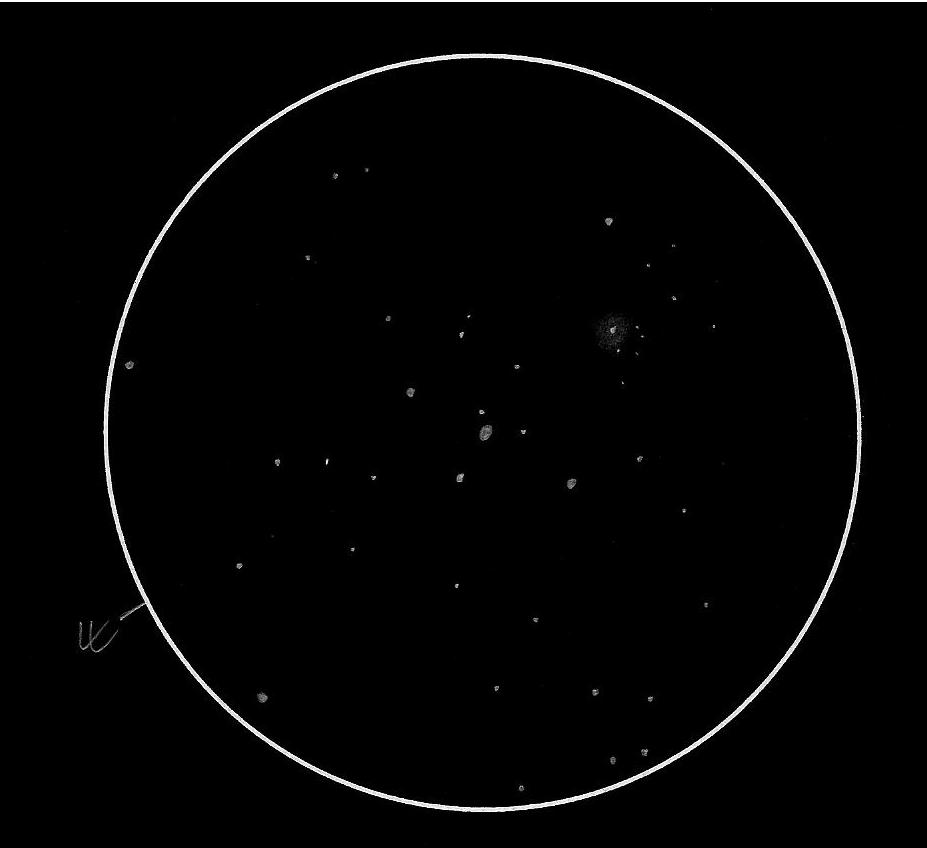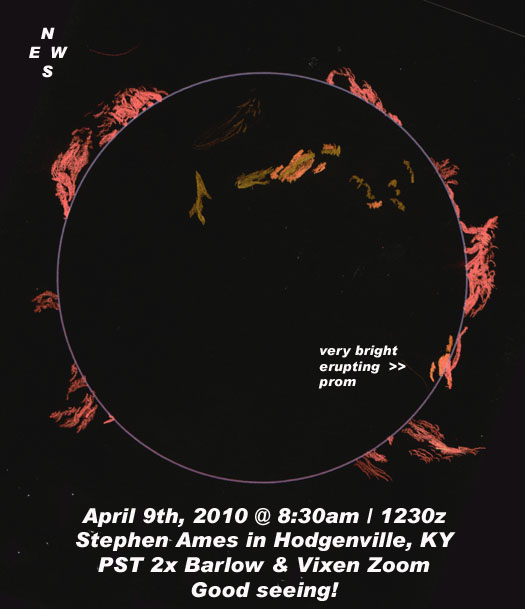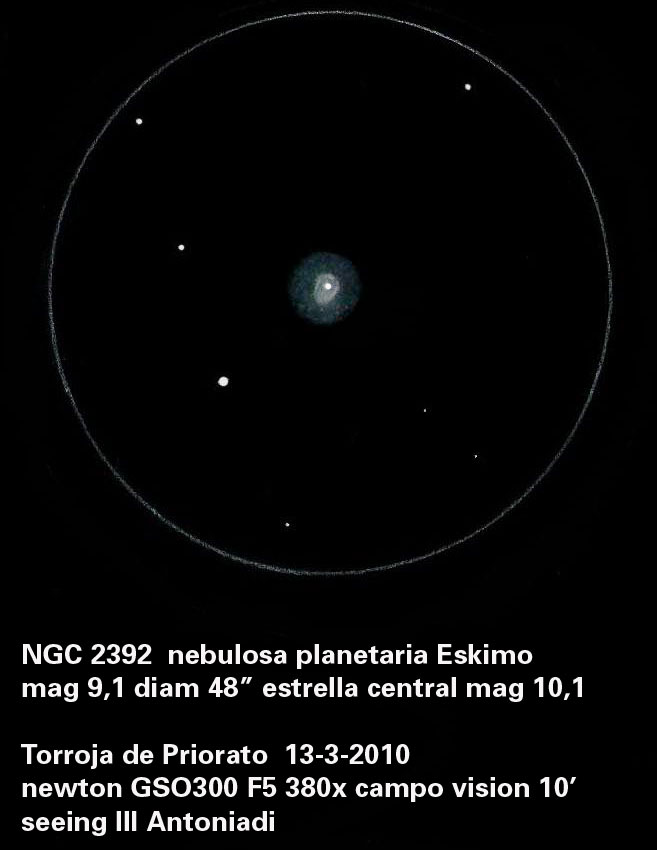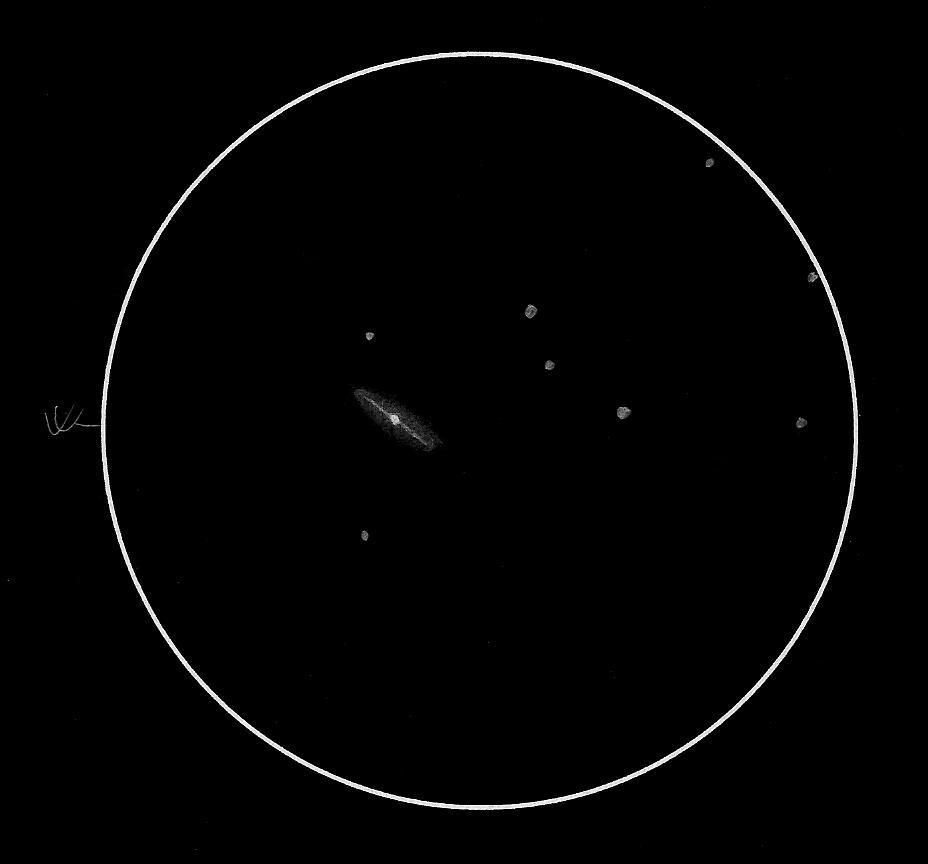
Messier 99
Sketch and Details by Bertrand Laville
Observation details
Date of observation: 08 févr. 2008 02:00 UT
Length of observation: 100 min
Object position: Alt: 59.0°, Az: 158.7°
Observation conditions:
no wind, t 4.3°, hu 53%, SQM at zenith 21.55, limiting naked eye magnitude 6.6 in UMi, Transparency 1 (on scale 1 very good to 5 very bad) weak light pollution on west horizon, seeing quite good.
Observing site:
Puimoisson le PetitTelle, Southern French Alps, altitude 700 m
Instrument: TN 635 Dobson Obsession
Main eyepiece: Televue Nagler 13mm Type 6
Barlow: (None)
Magnification: 240x
Notes:
Very structured galaxy. Three spires are obvious. The “S” shape made by the two longest ones is well visible. Center regions are very concentrated, with a stellar nucleus, about m15v.
HII regions are numerous and precisely analysable along the three spires. More details in my web site (with, unfortunately, observing notes written in french)
Bertrand Laville, from Marseille, France
www.deepsky-drawings.com


